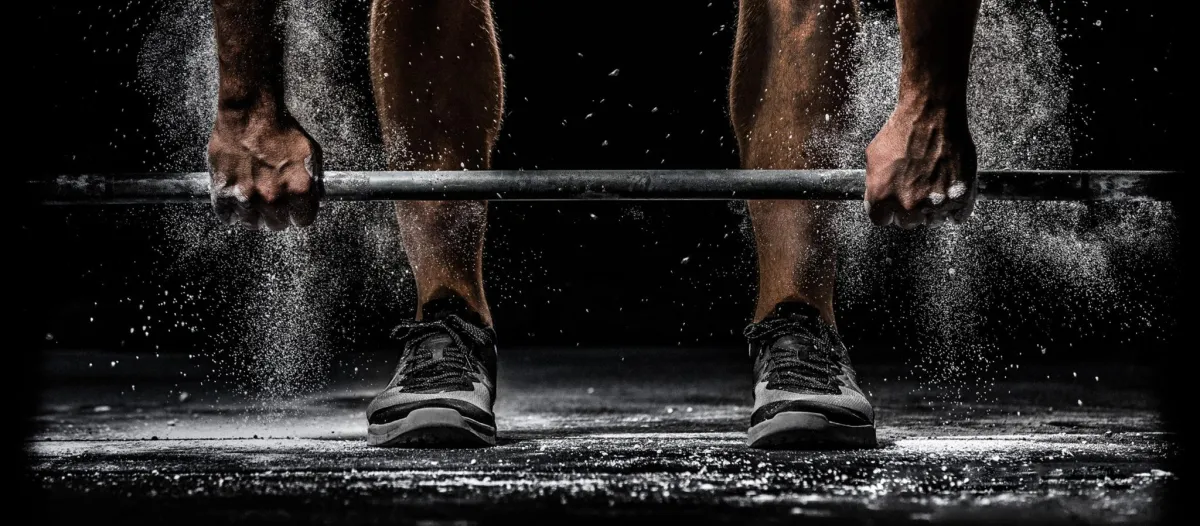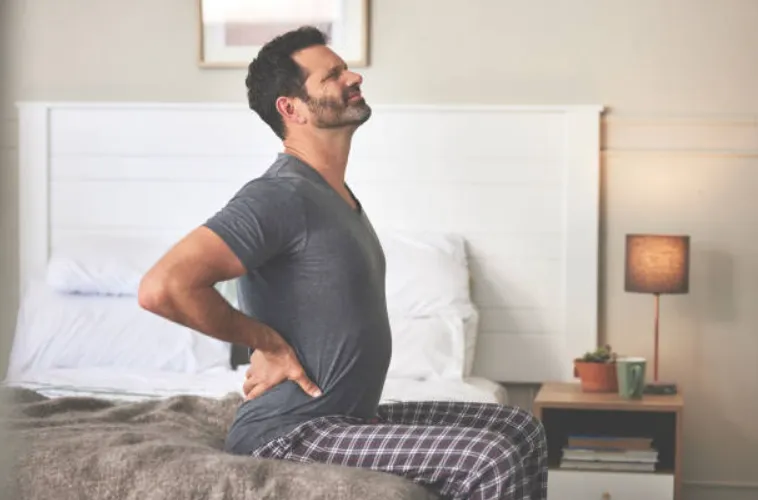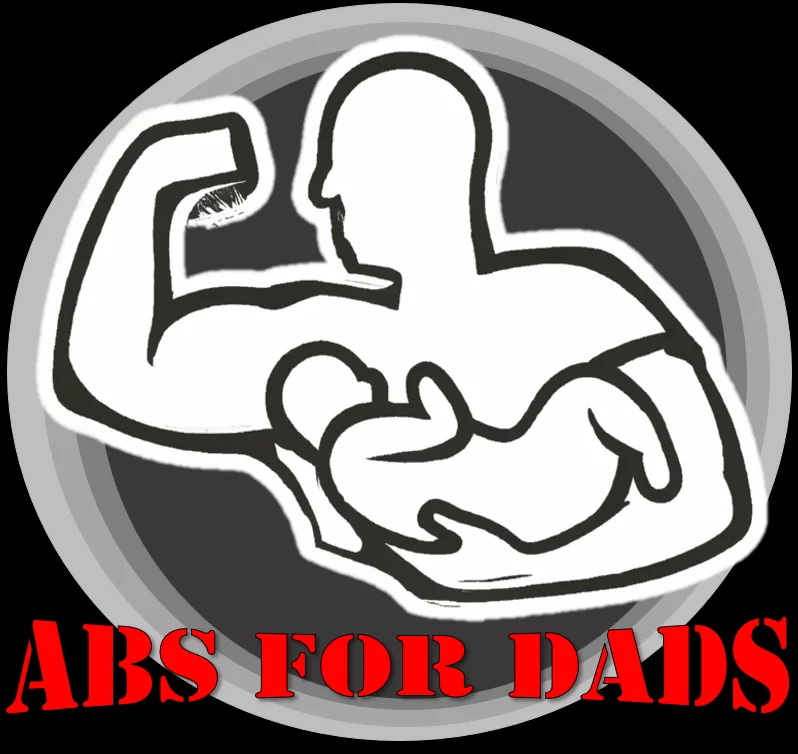THE BLOG
The Ultimate Fitness Blog for Dads
TOPICS
Welcome to Abs For Dads, your premier resource for time-efficient fitness solutions tailored for busy fathers. Discover practical tips and expert advice to transform your health and fitness, seamlessly integrating into your demanding schedule.

Fitness
Explore our curated fitness tips and routines designed to maximize efficiency for the modern dad. Whether at home or the gym, our time-sensitive workouts ensure you achieve optimal results with minimal time investment.

Nutrition
Unlock the secrets of hassle-free nutrition with our easy-to-follow meal ideas and delicious recipes. Abs For Dads empowers you to make informed food choices that align with your fitness goals, promoting vitality and strength.

Lifestyle
Enhance your overall well-being with our lifestyle hacks. From stress management to effective time optimization, our blog covers a spectrum of topics ensuring you achieve success in your fitness journey.

The Dad Pain Series: Dealing with Back Pain
Hey, Dads! Are you grappling with back pain but feel too swamped to deal with it? You're not alone. An estimated 80%+ of adults experience back pain at some point in their lives. Whether it's from an old football injury, lifting your little ones, or too many hours in that office chair, back pain is more than just an annoyance—it can seriously cramp your dad style. But stand tall! We're back with another edition of the Dad Pain Series with some straightforward strategies to help you ditch the discomfort and prevent future flare-ups, so you can focus on what really matters—being an awesome dad.
Understanding Your Back
Upper Back 101
Your upper back, or the thoracic spine, isn’t just there to keep you upright at your kid’s soccer game. It consists of 12 vertebrae connected to your ribs, forming a sturdy cage that protects vital organs like your heart and lungs. Muscles here like the trapezius and rhomboids are the unsung heroes keeping your posture in check and enabling you to lift everything from a toddler to a turkey out of the oven.
What’s Going on Back There?
Trapezius: Your go-to muscle for shrugging when you pretend not to hear the ice cream truck.
Rhomboids: These pull back your shoulder blades when you’re showing off your dad dance moves.
Levator Scapulae: Elevates the shoulders when you lift your kid for that slam dunk.

The Culprits of Back Pain
Back pain can sneak up on you whether you're lifting weights, kids, or just lifting off the couch after a long day. Here's a closer look at what might be tweaking your back:
Muscle Overload
Muscle strain is one of the most common causes of back pain. It occurs when muscles are overstretched or torn, typically from overactivity or incorrect use. This can happen from something as intense as lifting heavy objects improperly, or as mundane as bending awkwardly to plug in your phone. Muscle pain often manifests as an aching sensation and can be accompanied by spasms or stiffness.
Key Pointers for Dads:
Warm up before engaging in physical activity, even if it's just the family touch football game.
Learn proper lifting techniques: Bend at the knees, not the waist, and let your legs do the work.
We’ll dive more into lifting the right way momentarily. For now, here are some other causes of your nagging pains:
Sciatica

This sharp, sometimes debilitating pain travels along the path of the sciatic nerve, which extends from the lower back down through your legs. Typically affecting only one side of your body, it can feel like an electric shock, particularly when coughing or sneezing, and might worsen when sitting for long periods. Sciatica is often caused by a herniated disc or bone spur compressing part of the nerve.
Key Pointers for Dads:
Maintain a healthy weight to reduce pressure on your spine.
Consider a standing desk, or ensure your sitting posture is back-friendly if your job requires long hours at a desk.
A great movement to do is the Figure-4 stretch to relieve pain. While the stretch doesn’t fix any problems directly related to the sciatic nerve, it will help loosen and relax some of the muscles (like the piriformis) that might be pinching down on the nerve. Here’s how to do it:
Lie on your back on a flat surface with both knees bent and feet flat on the ground.
Cross your right ankle over your left knee, forming the shape of a "4".
Lift your left leg toward your chest, and grasp the back of your left thigh with both hands.
Gently pull your left thigh toward you while keeping your back pressed against the floor. You should feel a stretch in your right hip and buttock.
Hold the stretch for about 20-30 seconds, then slowly release and switch sides to repeat the process with your left ankle over your right knee.
Herniated Discs
The discs in your spine act as cushions between the vertebrae. A herniated disc, which you might hear called a slipped or ruptured disc, occurs when the soft center of a spinal disc pushes through a crack in the tougher exterior casing. This can irritate nearby nerves and result in pain, numbness, or weakness in an arm or leg.
Key Pointers for Dads:
Incorporate exercises that strengthen the muscles around your spine.
Avoid activities that strain your back—no showing off with heavy lifting if your body isn’t ready for it.
Arthritis and Osteoarthritis
Arthritis can wreak havoc on various parts of the body, including the spine. Osteoarthritis, the most common form of arthritis, might affect the lower back. In some cases, the space around the spinal cord narrows—an affliction known as spinal stenosis—adding pressure on your back and often leading to pain.
Key Pointers for Dads:
Stay active to keep your joints fluid and reduce stiffness.
Use heat therapy to ease joint pain and stiffness, particularly on cold, busy mornings.
Risk Factors That Increase Back Pain Potential

Aging: Degenerative changes in the discs and joints of the spine are more common as you age. And just like fine wine, your back shows its age, but not always gracefully.
Fitness level: Weak, unused muscles in your back might lead to pain. Think of it this way: your joints and muscles support your weight and movement day in and day out. If they’re not strengthened enough to endure the movement requirements you’re putting on it, your body will tell you about it through pain.
Weight gain: Carrying extra pounds puts extra stress on your back, particularly if that weight is around your midsection.
Poor Posture: Slouching on the couch can lead to more than just nagging from your spouse—it messes with your back big time.
Genetics: Some causes of back pain, including disc disease, may be hereditary.
Recognizing these culprits and understanding the specific factors contributing to back pain can equip you with the knowledge to prevent future issues and address current discomforts effectively. Remember, maintaining an active lifestyle and practicing preventive measures can significantly reduce your risk and keep you agile for your everyday dad duties.
Factors That Mess With Your Back
In addition to these four listed above, it’s imperative to touch on lifting with proper form. If you’re following an Abs For Dads regimen, or just lifting in general, then this is something you can’t forego.
So why does it matter?
Lifting incorrectly can put tremendous strain on your back, particularly the lower back, or lumbar region. The spine can handle a certain amount of load and stress when properly aligned. However, improper lifting, such as bending from the waist instead of the knees, can place excessive pressure on the discs and ligaments of the spine, leading to strains, sprains, or even disc herniations. Your back is the unfortunate “backup” plan in the event you aren’t properly targeting the right muscle group during exercise. Think about it: what exercise could you do that doesn’t involve your back in some way as your form degrades?
Consequences of Incorrect Lifting:
Muscle Strain and Sprains: These are common injuries that can occur when the muscles around the spine are stretched or torn.
Disc Injuries: Improper lifting can cause the discs in your spine to bulge or rupture, leading to painful herniations that may require long-term management.
Chronic Back Pain: Frequent misuse of back muscles can lead to persistent pain, affecting quality of life and limiting daily activities.
How to Lift Properly:
This checklist corresponds to deadlifting movements, which are appropriate for when you might be lifting a weight off the ground, whether that is the exercise being performed or you’re just bringing the weight up to the starting position from the floor. Regardless, most of these tips apply across the entire spectrum of exercises:
Plan Your Lift: Before lifting, plan your action. Ensure that the pathway is clear and decide where you are placing the load.
Stand Close to the Object: Keep your feet shoulder-width apart for a solid foundation of support. Stand as close to the object as possible to minimize the strain.
Bend Your Knees, Not Your Back: Always bend at the knees and squat down to the level of the object. Keep your back straight and avoid twisting.
Secure Grip: Make sure your grip is firm and secure. Use both hands to check the weight and stability of the object before lifting it.
Lift with Your Legs: As you stand up, straighten your knees and use the strength of your leg muscles, not your back, to lift the load. Keep the load close to your body to decrease the strain on your back.
Avoid Twisting: When changing direction, turn your whole body, feet first, instead of twisting at your waist.
Set Down Carefully: When setting the load down, use the same principles: bend at the knees and keep your back straight.
PRO TIP: When you’ve established a strong grip before picking up the weight, engage your lats and keep them flexed during the lift. This creates a powerful (and natural) support around your spine and reduces spinal loading. It also helps you keep the weight closer to your body which promotes a more stable center of gravity and actually assists in keeping the force you’re generating geared towards supporting the actual movement.
Training and Tools:
Proper Training: If your job involves heavy lifting, ensure you are trained in and consistently apply proper techniques.
Practice, Practice, Practice: If you do engage in resistance training, understand the fundamentals of every movement that you're conducting in your workout. If you are new to lifting, then your absolute priority should be on mastering the fundamentals and perfecting your form. You DO NOT want to add weight and get stronger using bad form - that’s a recipe for injury when you eventually hit your body’s breaking point.
Use Lifting Aids: Whenever possible, use tools like a dolly or a forklift. For jobs at home, tools like moving straps or a sturdy wheelbarrow can help distribute the weight and reduce the load on your back. Make sure you are using good form when lifting these implements too.
Winning the Back Pain Battle

Strengthen and Stretch
Incorporate back-friendly exercises into your routine. Think swimming, walking, or gentle stretching—activities that strengthen your back without turning you into a pretzel.
Weight Management
Keep an eye on the scale to help take the load off your back. Eating right and keeping active can do wonders for your waistline and your back health.
Posture Perfection
Whether you’re at work or home, maintaining good posture is crucial. Invest in a good chair, get up and move regularly, and practice good posture to keep your back in check. Setting a timer or consciously reminding yourself to stand up at regular intervals will help you be mindful in supporting your posture.
When to See a Pro
If your back pain is persistent or severe—especially if it’s affecting your ability to play with your kids or manage daily activities—it’s time to consult a professional. Don’t tough it out when a physical therapist or a chiropractor can offer strategies and treatments that might just make you feel like a new man.
Quick Tips for Immediate Relief
Ice and Heat: A cold pack can reduce inflammation, while a heating pad can loosen tight muscles. Just remember, ice for injuries, heat for muscles.
Over-the-Counter Aids: Anti-inflammatories can be a quick fix but use them wisely. Long-term, they’re not a substitute for dealing with the underlying issues.
Keep Moving: It might be tempting to lay low, but light activity can actually be beneficial. Just don’t overdo it—no one’s awarding dad points for limping around.
Long-Term Strategies
Making small lifestyle changes can pay off big time in managing back pain:
Ergonomic Workspace: Set up your work area to support your back properly. This means a chair that supports your spinal curves, a desk at the right height, and a setup that encourages good posture.
Regular Exercise: You know us - we’re the guys who tell you how important working out is for everything else. It wouldn’t be an Abs For Dads post without bringing it up once (or ten times). Integrating regular physical activity into your day helps keep your back strong and flexible. This doesn’t have to mean hitting the gym hard—it can be as simple as a nightly walk or weekend bike rides with the kids. Just be active!
Balanced Diet: Eating well supports not just your back, but your whole body. Foods rich in calcium and vitamin D are great for bone strength, while omega-3 fatty acids can help reduce inflammation. If you need health meal options, check out our recipes page for ideas.
The Bottom Line
Back pain doesn't have to be your normal. With the right approach, you can manage or even banish it from your life. Remember, taking care of your back is part of taking care of your family. After all, those piggyback rides won’t carry themselves, and you want to be in fighting form to tackle everything from diaper duties to dodgeball. So, take these tips, tweak your habits, and keep up with the dad life without the back strife.
Key Takeaways:
Understand Your Back: Familiarize yourself with the structure of your back to better understand sources of pain. Key muscles like the trapezius, rhomboids, and levator scapulae play major roles in maintaining posture and handling physical activity.
Common Causes of Back Pain:
Muscle Overload: Strains from overactivity or incorrect movements, such as improper lifting.
Sciatica: Caused by herniated discs or bone spurs that compress the sciatic nerve, leading to sharp pain.
Herniated Discs: Soft centers of spinal discs push through their casing, irritating nearby nerves.
Arthritis and Osteoarthritis: Inflammation and narrowing of the spaces in the spine can cause significant discomfort.
Factors Increasing Back Pain Risk:
Aging impacts spinal health.
Low fitness levels can weaken back muscles.
Excess weight puts additional stress on the spine.
Poor posture can exacerbate back issues.
Genetics and occupational hazards also play roles.
Prevention Strategies:
Exercise Regularly: Focus on strengthening and stretching exercises to support the back.
Manage Weight: Maintain a healthy weight to reduce stress on the spine.
Mind Your Posture: Practice good posture at all times to prevent strain.
Proper Lifting Technique: Critical for preventing back injuries. Key steps include planning your lift, using your legs instead of your back, keeping the load close to your body, and avoiding twisting movements.
When to Seek Professional Help: Consult a doctor if back pain persists, especially if it interferes with daily activities or includes symptoms like numbness or severe discomfort.
Immediate Relief Tips:
Use ice packs for inflammation and heating pads for muscle relaxation.
Over-the-counter pain relievers can offer temporary relief.
Maintain light activity to avoid stiffness.
Long-Term Health Strategies:
Set up an ergonomic workspace.
Keep physically active with regular exercise.
Eat a balanced diet to support overall spine health.

Where Busy Dads Thrive in Health and Fitness!
Join the Abs For Dads community and redefine your health and fitness narrative. Bookmark our blog for ongoing insights. Prioritize your health without compromising your busy lifestyle – because being a fit and active dad is within reach.
Like What We're Saying? Sign Up For Our Newsletter!

Call 877-395-7147
Email:travis@absfordads.org
Site: www.absfordads.org

Abs For Dads LLC Privacy Policy
